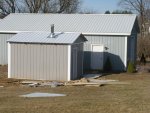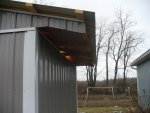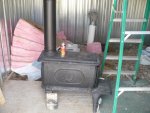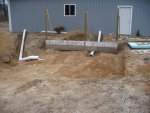Sounds like you need an "all of the above" solution.
When the gas runs out, you're going to need a commercial solution. You can either switch to LP or replace the furnace with electric. Dropping in a LP tank and plumbing it in has a cost that may be similar to putting in a new electric unit. Be advised, if you switch to electric then use those electric coils in the furnace as opposed to heat pump or another source, it can get pricey. I think mine has 4 coils that some on in stages. Each is 5KW. If it kicks on all 4, that's 20KW or about $2
per hour. Another disadvantage of electric heat is your generator needs to be a lot larger. You could probably run your whole house on a 7KW genset when using gas. I'm all electric and my 15KW isn't big enough to run any heating (other than the fans on the wood stoves). I'd have to go to 20KW to run the heat pump and 30KW if I want to even think about turning on the electric furnace. Because I heat with wood, my electric furnace is only used a couple hours each winter.
On the heat pump, I don't know what you have but if it's somewhat new it probably isn't costing much to run. Mine is about 12 years old and is a 5-ton unit. Whether running for heat or A/C in the summer, I've found it to be about $1 per day avg, even on extreme hot days where it runs 12-16 hours straight. Some new heat pumps have a cold weather
something but they're good down to something like 0°.
If I were in your shoes and anticipating the gas going out.
First, I'd go with LP over electric.
I'd look into
buying (not renting) something like a 500 gallon propane tank. Get it in place and plumbed into the house but capped and not yet connected to anything. Buy whatever parts are needed to plumb in your furnace, water tank, oven, dryer... Watch the prices for propane then get it filled when the price is low. That propane can sit for years. It doesn't go bad.
Remember, you're only going to know your current gas is gone when you're using some heating appliance it it doesn't work. If it's the dead of winter and your furnace doesn't have gas, you're now in trouble. If you have all the LP components on-site and plumbed to the house, you (or a HVAC tech) can relatively quickly switch your appliances to LP. If you don't have the LP ready, it may be days to get it all in and then you're at their mercy for pricing. Also hope your house/pipes don't freeze.
Now that you know you can keep your house functioning, look at a wood burning solution. With even 5-10 acres of woods, you have an endless supply for a house. You already have the big tools needed for harvesting (tractor, RTV...). A decent saw and a couple small tools and you're up and running. As you consider a wood solution, start getting firewood to the house area (out of the woods). To let the wood season properly, you'll want to be at least 2 years ahead.
You can always sell it if you get too far ahead or decide against a wood burner. Until you pick a stove, I'd cut your chunks to 15-17". Most any wood burner can take that size. If you cut at 20" and the one you want only handles up to 18", you're screwed.
Now that I've spent all your time and money for the next year or 2, you now have plenty of time (1-2 years) to think about what you really want for a wood burning solution.


 And propane is my preference of the options. Most like the gas I already have. I'm thinking I'd unhook my incoming gas line and hook up the propane, change orifices and should be good to go.
And propane is my preference of the options. Most like the gas I already have. I'm thinking I'd unhook my incoming gas line and hook up the propane, change orifices and should be good to go.



